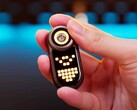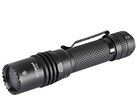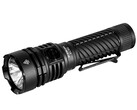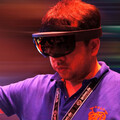Ledlenser has completely redesigned its P-series flashlights. These new models come in up to three versions and usually feature a USB-C port for charging the internal battery, with the exception some models with non-rechargeable batteries. These flashlights are named Px, where the x is a number that roughly defines the performance and size. Additionally, sometimes there is a Px Pro and, more rarely, a Px Signature version, which Ledlenser only sells at its official shop.
But flashlight buyers have to be careful when shopping around. The flashlights presented in this article are not yet available, even though Amazon and others retailers still offer the old generation under the same product name. The new flashlights can best be identified by their USB port. At Ledlenser’s own online store, the old models are listed as 2020 or 2021 editions. This is not ideal, as retailers have not yet adopted this change. This even applies to the Ledlenser-branded Amazon store.
The changeover is a result of an announcement Ledlenser made this year at the Iwa in Nuremberg. This will now become reality toward the end of August or September, as Ledlenser will be shipping its first flashlights with USB-C. The webshop indicates August 18 as the launch date. However, the marketing campaign will not start until late September to coincide with the beginning of the darker time of the year.
The USB port is not always located on the flashlight itself. In the small P2R model (R stands for rechargeable), the battery itself has a USB-C port. On larger models, the port is directly on the flashlight, including the charging electronics.
The Ledlenser P-series includes a total of 16 models from P2R to P21R, but we will focus on the P7R Pro model here.
Hands-on with the Ledlenser P7R Pro flashlight and dock
The P7R Pro does not necessarily have to be charged via USB-C. The flashlight ships with a Type-D charging station that connects to the two external contacts on the flashlight. This docking concept has been retained and not retained, which some users feared.
The charging station itself is powered by USB-C. A cable can be routed through the bottom for this purpose. The charging station can either rest on a table or be screwed to a wall. You only have to gently push the flashlight into the holder and can save yourself the hassle of fumbling with the USB cable. As long as you don't push the flashlight in the wrong way, no mistakes can be made. Four LEDs on the flashlight indicate the current status during charging.
So, Ledlenser is keeping the docking port for many models. Ledlenser says that older accessories are also supported. Unfortunately, this is not the case when it comes to charging. Ledlenser said that the magnetic charging cable (Type A) is not compatible with the new P7R series. The website does at least mention compatibility with the 35.1 mm color filters as well as the Traffic Cone.
Direct charging via USB-C
The USB port on the P7R Pro is more practical for on the go charging. The dock can stay at home or in the office, and almost any USB-C power adapter should be usable instead. Regular USB-C current is sufficient. We measured 7.5 watts in the upper charge range and 10 watts when the flashlight is empty. By the way, it's not possible to turn the flashlight on while charging. Even in the dock, the flashlight immediately turns off as soon as it makes contact with the pins.
According to Ledlenser, the USB-C port on the new series is water-resistant, even when exposed. A rotatable ring also protects the port from dust. The ring also serves as the selection switch for various light modes. The ring dial isn't new, as the P7R Signature 2020 already had it. However, it's now being used more consistently to simplify operation.
Pressing the power button starts the light in the selected power mode, albeit with a noticeable delay. We estimate it’s around 0.3 to 0.5 seconds. During this time, the flashlight apparently waits for further input. A double click starts the light immediately, except in turbo mode, which reverts to the basic setting after ten seconds.
The flashlight can also be completely locked with the ring, either by exposing the USB port or via the lock symbol on the other side. This prevents the flashlight from accidentally turning on. The ring itself can hardly be turned accidentally yet is still easy to operate.
In terms of optics, the Ledlenser provides a fairly homogeneous floodlight. There's no very bright core, that's what the zoom is for. With our model, the zoom was surprisingly stiff at first. We were more successful at turning the protective rubber, which puts its own protective glass in front of the lamp head and can be removed. After we removed the protection, we were able to turn the flashlight head. It has been smoother ever since.
When fully zoomed, the light is very homogeneous. When focused, it's very strong in the center, as you would expect from flashlights without a zoom. In a medium setting, there is a slight central shadow, but this would hardly be noticeable during regular usage.
Thanks to the rubber protection, you can use the Ledlenser P7R Pro quite casually without bumping into anything. If you put the flashlight on its head, you can still see if it's on because the protection on the head has gaps. If you remove the protection, Ledlenser uses a red dotted ring on the outside that is indirectly lit by the LED. So even without the protection, you can see if you accidentally left the flashlight on and placed it upside down.
The rear also has an integrated rubberized protector. The flashlight can stand to provide indirect light by pointing it at the ceiling. The rubberized protection on the end is also the cap that unscrews to replace the battery. Inside is a 21700 battery with a capacity of 16.2 Wh. A quick test with batteries from Acebeam and Nitecore showed no issues. Everything worked as intended, but needless to say, Ledlenser recommends using its own batteries.
In focused mode, the P7R can roughly match the Nitecore MH12S in turbo mode but has to concede to the EDC35. That said, Nitecore flashlights get significantly hotter than the P7R Pro. On the other hand, the Ledlenser is also much larger than most 21700-based flashlights. This apparently has advantages when it comes to heat dissipation. The Nitecore models can't keep up with the wide floodlight of the P7R Pro, either, so the P7R Pro is a pretty interesting all-rounder.
According to the technical specifications, the P7R Pro offers a throw of up to 320 meters and 2,000 lumens. The 2,000 lumens refer to the temporary boost mode, which is noticeable with the focus fully zoomed out but hardly differs from the 1,200 lumens. At 1,200 lumens, the light can be used for 2.5 hours.
Medium mode offers 450 lumens, while the lowest mode produces 25 lumens and supposedly lasts for 60 hours. The CRI is 80, and the color temperature is in a range of 4,500 to 5,500 Kelvin.
The P7R Pro is 6.7 inches long, has a bulky head and weighs 7.9 oz. It comes with an IP68 certification and should survive drops from 6.5 ft. Interestingly, this also applies to the P7R without the rubber guard. The latter comes with an LED with a very cool light temperature of 6,000 to 7,500 Kelvin.
The P7R Signature has a slightly more powerful LED and a different design than the regular P7R. All variants are made with 75% recycled aluminum. According to Ledlenser, minimal color deviations can occur due to the manufacturing process. However, nothing of the sort was noticeable on our review unit.
The Ledlenser P7R, P7R Pro and P7R Signature cost €120, €150 and €170, respectively.
Transparency
The selection of devices to be reviewed is made by our editorial team. The test sample was given to the author by the manufacturer free of charge for the purposes of review. There was no third-party influence on this review, nor did the manufacturer receive a copy of this review before publication. There was no obligation to publish this review. We never accept compensation or payment in return for our reviews. As an independent media company, Notebookcheck is not subjected to the authority of manufacturers, retailers or publishers.

























